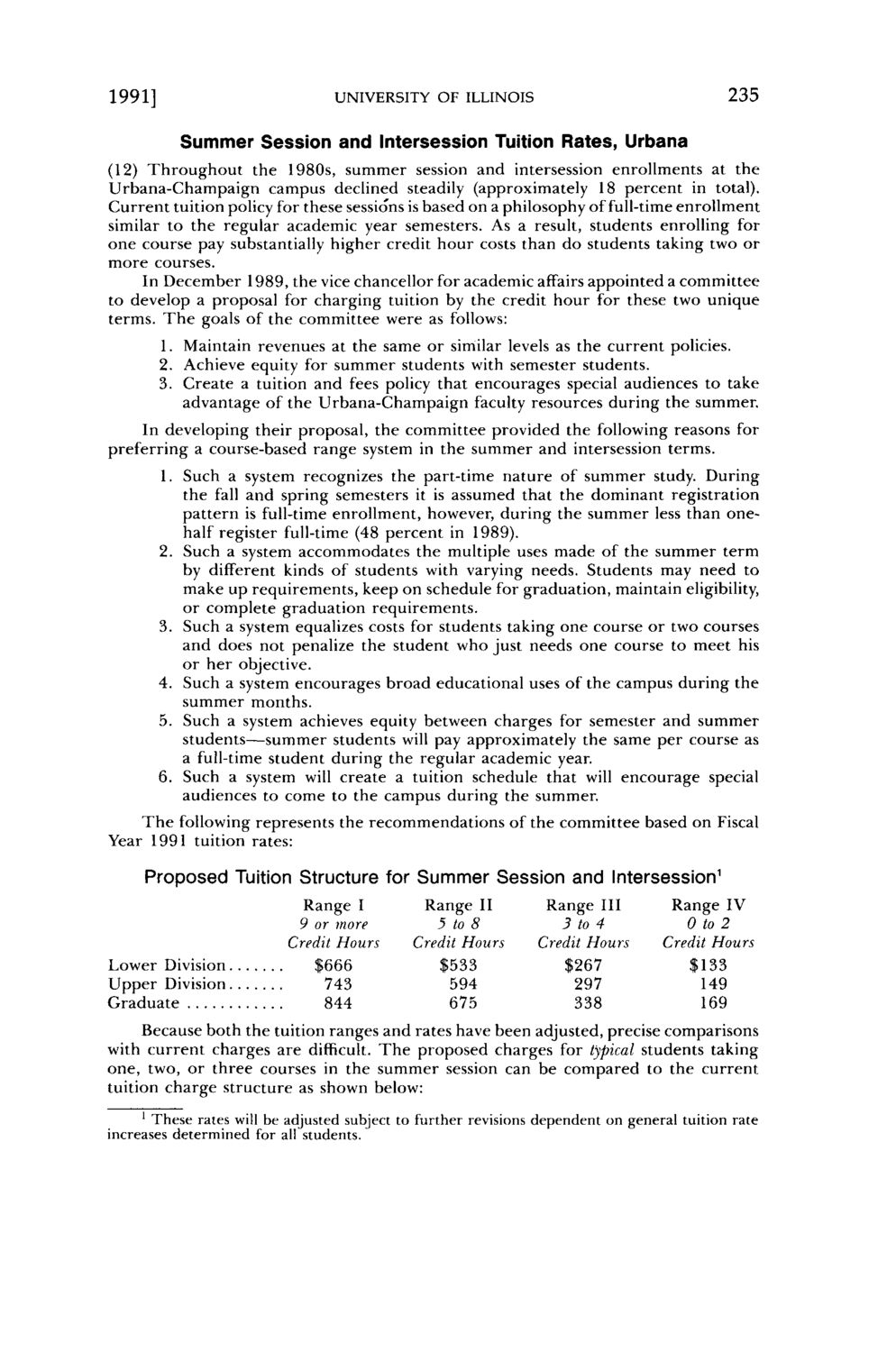Caption: Board of Trustees Minutes - 1990
This is a reduced-resolution page image for fast online browsing.

EXTRACTED TEXT FROM PAGE:
1991] UNIVERSITY OF ILLINOIS 235 Summer Session and Intersession Tuition Rates, Urbana (12) Throughout the 1980s, summer session and intersession enrollments at the Urbana-Champaign campus declined steadily (approximately 18 percent in total). Current tuition policy for these sessions is based on a philosophy of full-time enrollment similar to the regular academic year semesters. As a result, students enrolling for one course pay substantially higher credit hour costs than do students taking two or more courses. In December 1989, the vice chancellor for academic affairs appointed a committee to develop a proposal for charging tuition by the credit hour for these two unique terms. T h e goals of the committee were as follows: 1. Maintain revenues at the same or similar levels as the current policies. 2. Achieve equity for summer students with semester students. 3. Create a tuition and fees policy that encourages special audiences to take advantage of the Urbana-Champaign faculty resources during the summer. In developing their proposal, the committee provided the following reasons for preferring a course-based range system in the summer and intersession terms. 1. Such a system recognizes the part-time nature of summer study. During the fall and spring semesters it is assumed that the dominant registration pattern is full-time enrollment, however, during the summer less than onehalf register full-time (48 percent in 1989). 2. Such a system accommodates the multiple uses made of the summer term by different kinds of students with varying needs. Students may need to make up requirements, keep on schedule for graduation, maintain eligibility, or complete graduation requirements. 3. Such a system equalizes costs for students taking one course or two courses and does not penalize the student who just needs one course to meet his or her objective. 4. Such a system encourages broad educational uses of the campus during the summer months. 5. Such a system achieves equity between charges for semester and summer students—summer students will pay approximately the same per course as a full-time student during the regular academic year. 6. Such a system will create a tuition schedule that will encourage special audiences to come to the campus during the summer. T h e following represents the recommendations of the committee based on Fiscal Year 1991 tuition rates: Proposed Tuition Structure for Summer Session and Intersession1 Range I 9 or more Credit Hours $666 743 844 Range II 5 to 8 Credit Hours $533 594 675 Range III 3 to 4 Credit Hours $267 297 338 Range IV 0 to 2 Credit Hours $ 133 149 169 Lower Division Upper Division Graduate Because both the tuition ranges and rates have been adjusted, precise comparisons with current charges are difficult. T h e proposed charges for typical students taking one, two, or three courses in the summer session can be compared to the current tuition charge structure as shown below: 1 These rates will be adjusted subject to further revisions dependent on general tuition rate increases determined for all students.
|